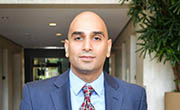We say you’re not guaranteed a flawless trial, only a fair one, so even when there’s error, we don’t reverse a conviction if the error is deemed to be harmless overall.
But a federal court of appeals recently reversed a state murder conviction because of a legal error that several courts before it had deemed harmless. The case takes an interesting look at the weight and power of jury instructions in a murder trial, and it begins with a shooting outside a Las Vegas hotel, with a guy who’s convicted of second-degree murder and sentenced to life in prison.
The guy never denied the shooting but argued it was in self-defense. Self-defense, of course, is a complete defense if you can “perfect” the defense, meaning you can establish not just that you sincerely believed that using force was necessary but that your belief was reasonable. Otherwise, “imperfect” self-defense, where your honest belief is judged to be unreasonable, is not a complete defense, meaning you don’t just walk. In some jurisdictions, though, it’s enough to reduce murder to manslaughter, because an honest belief in the need to use force, even if later judged unreasonable, means you didn’t act with malice, so you can’t be guilty of murder (the classic definition of which is an unlawful killing with malice aforethought). But other jurisdictions don’t lean that way, including Nevada.
In this case, the jury convicted the guy of second-degree murder, so they don’t appear to have accepted a complete self-defense theory, but they could’ve convicted him of manslaughter, and they were given the option to do so. In fact, they received instructions on each of first-degree murder, second-degree murder, voluntary manslaughter, and involuntary manslaughter. Voluntary manslaughter, they were told, was the unlawful killing of another without malice but rather upon a sudden quarrel or heat of passion caused by sufficient provocation. They were told that sufficient provocation could include an attempt by the person killed to commit a serious personal injury on the person who did the killing.
The problem was that the jury instruction on self-defense confused the interplay between murder and manslaughter. They told the jury that an honest but reasonable belief in the need for self-defense did not negate malice and did not reduce murder to manslaughter. That was flat wrong. An honest and reasonable belief in the need for self-defense always negates malice. The court had meant to say “unreasonable,” not “reasonable,” but it was a clerical mistake, and no one ever caught it. The court even corrected another typo in the same instruction and advised the jury about it, which may have reinforced to the jury that the rest of the instruction was correct.
On appeal, the Nevada Supreme Court agreed that the instruction was wrong, but it held that the error was harmless given the totality of the jury instructions and the evidence admitted at trial. The defendant filed habeas corpus petitions in the state courts as well as in federal district court, but they were all denied.
Finally, on appeal from the district court’s denial, the court of appeals ruled that the error was not harmless, and it reversed. The court held that the error had a “substantial and injurious effect or influence” on the jury’s verdict because it lowered the state’s burden to prove murder by confusing the kind of provocation that could reduce murder to manslaughter.
So was the error harmless, and was it murder or manslaughter? You can decide for yourself. Most of the facts of the case were not in dispute, including the following.
The defendant had met up with his girlfriend and two younger brothers at a nightclub in Las Vegas. When his girlfriend tried to leave, she encountered the alleged victim, who was a neighborhood rival, standing next to her car with his friends. She asked them to move so that she could leave, but they wouldn’t get out of the way. As she tried to back her car out, she hit the alleged victim in the arm, and the guy got upset, kicked her car, and screamed obscenities at her. When her boyfriend (the defendant) came out of the club, the other guy began yelling at him, too, and in the moments that followed, the other guy pulled a box cutter from his pocket. He may have been fixing to use it, too, but one of the club’s security officers grabbed him by the arm and restrained him, and there was no further incident at the club.
The defendant and his brothers left the club and drove to a casino, but the other guy and his friends followed them there, making threatening gestures at them along the way. When the defendant’s crew pulled into the parking lot, so did the other crew. Apparently, the ensuing commotion was loud enough that the casino’s security wouldn’t allow either group inside, so things went from bad to worse outside. A fistfight broke out. Then someone in the other guy’s group began throwing rocks at the defendant’s group. Then the other guy brandished his box cutter again and threatened to cut the defendant’s face off.
Amid the commotion, at some point, the alleged victim went back to his car and got in from the passenger side, without closing the door. At that point, the defendant went to his own car, retrieved a gun, ran to the other guy’s car, and shot him four times.
At trial, witnesses testified to a history of confrontation between the two men in which the alleged victim was always the aggressor. Even one of the alleged victim’s own friends testified that his friend was always the aggressor; that the defendant was frightened that night; and that the defendant tried to de-escalate the situation. A psychiatrist who examined the defendant testified to a reasonable degree of medical probability that the defendant honestly believed he and his family were in danger of being killed. Although some witnesses testified that the altercation was over by the time the alleged victim went to his car, others did not, and one testified that he heard the alleged victim say just before going to his car, “You can dodge this knife, but you can’t dodge these bullets.”
Office Location
I highly recommend Mani Dabiri
Mr. Dabiri is an excellent attorney. He is professional, ethical and sensitive to his clients situation. I highly recommend Mr. Dabiri. He helped me navigate uncharted legal waters successfully.
– a client (5 star review)
Ratings and Reviews








